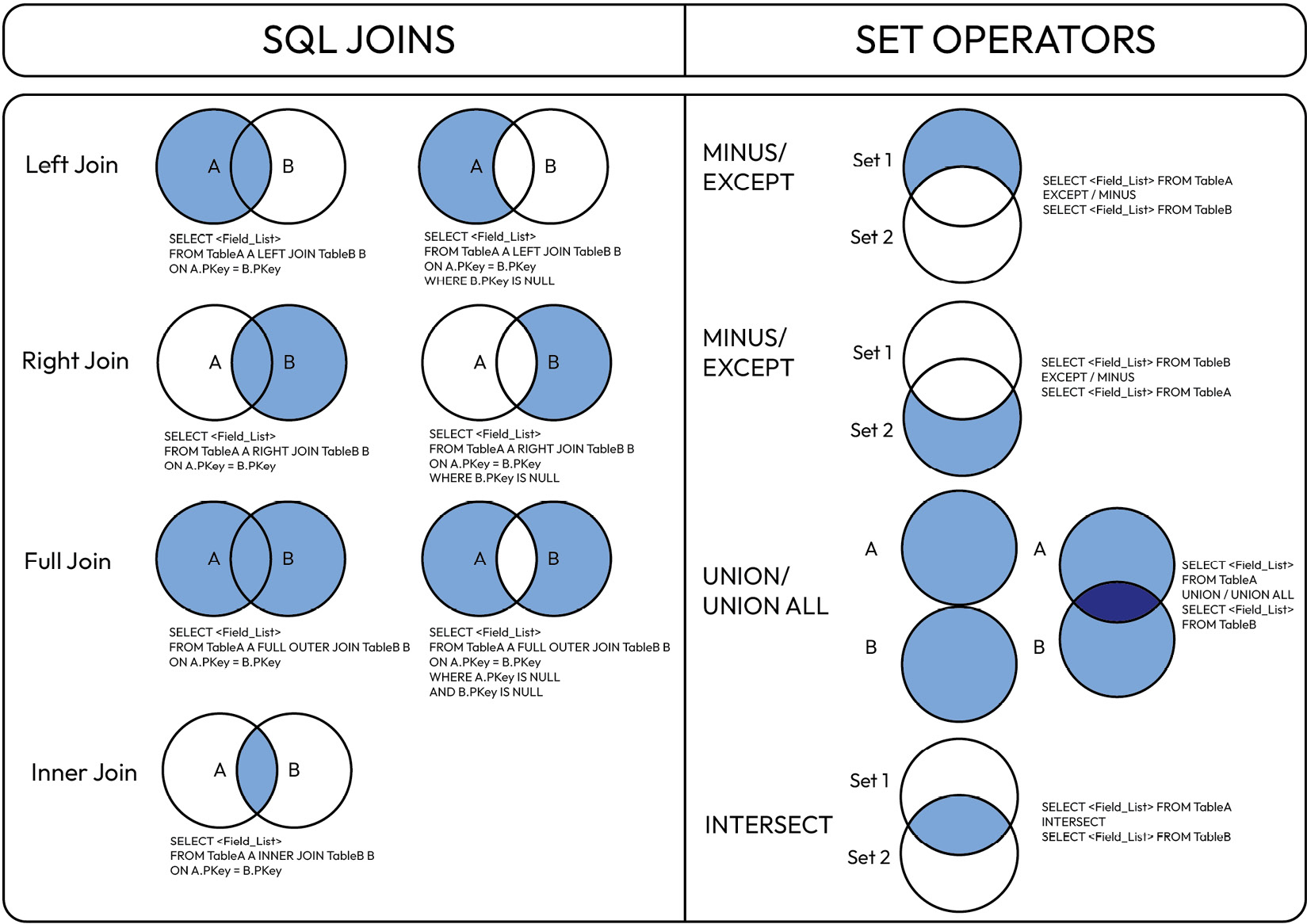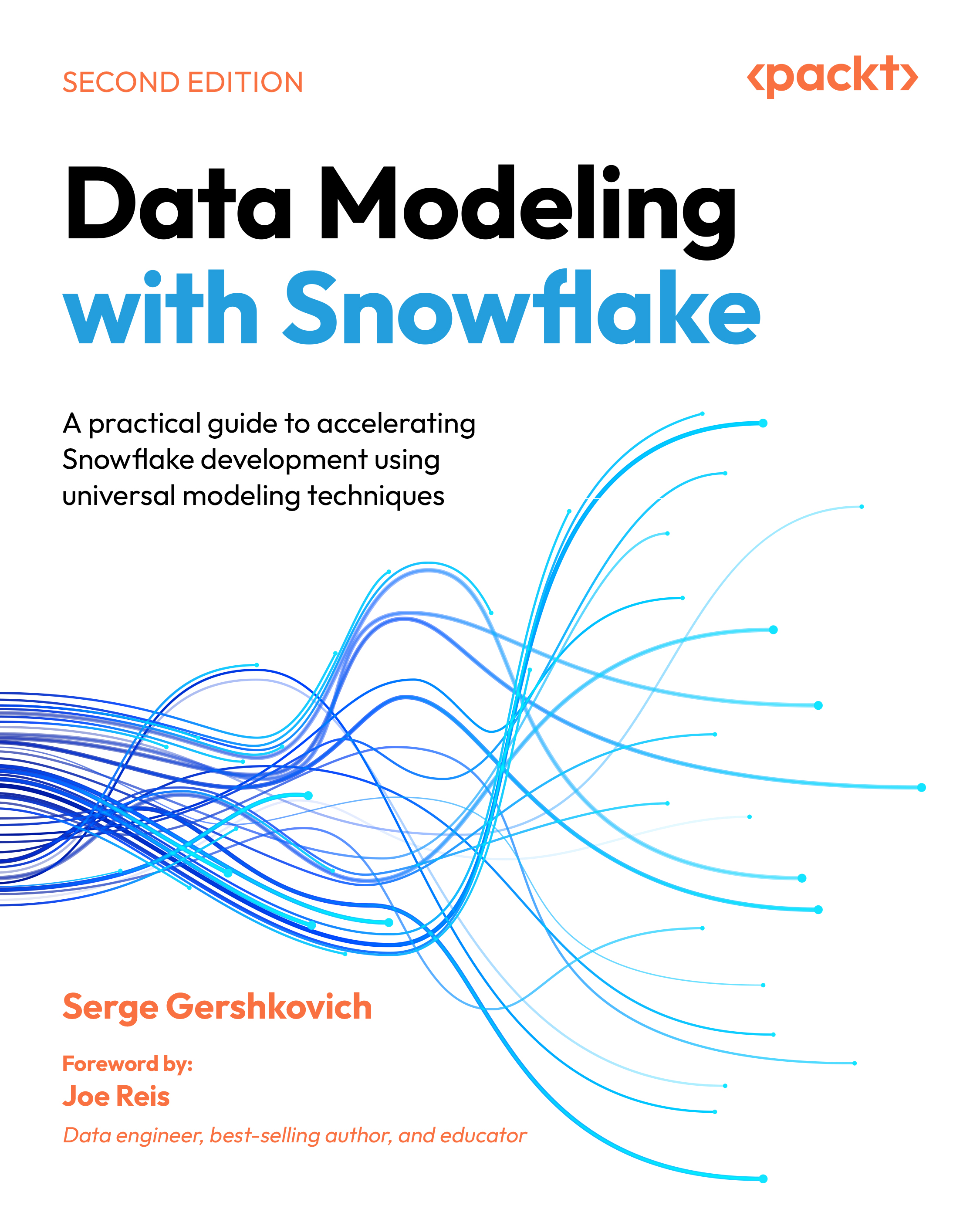Joins and set operators
In a database, there are two ways to bring sources of data together: joins and set operators. A join combines rows from two or more tables based on related columns, and a set operator—such as UNION—combines the results of multiple SELECT statements. But, you can also use a join on multiple SELECT statements.
An easier way to think about it is that joins combine data horizontally—across related rows—and set operators work vertically. The following example shows how identical records would look in a JOIN or UNION result.

Figure 13.8: An example of a JOIN and a UNION operation
JOIN and UNION are just some of the tools at the developer’s disposal. Let’s review all the join and set operators that Snowflake provides and briefly cover some of their use cases.
The following diagram shows the join and set operators available in Snowflake.

Figure 13.9: Snowflake joins and set operators
Here&...

































































